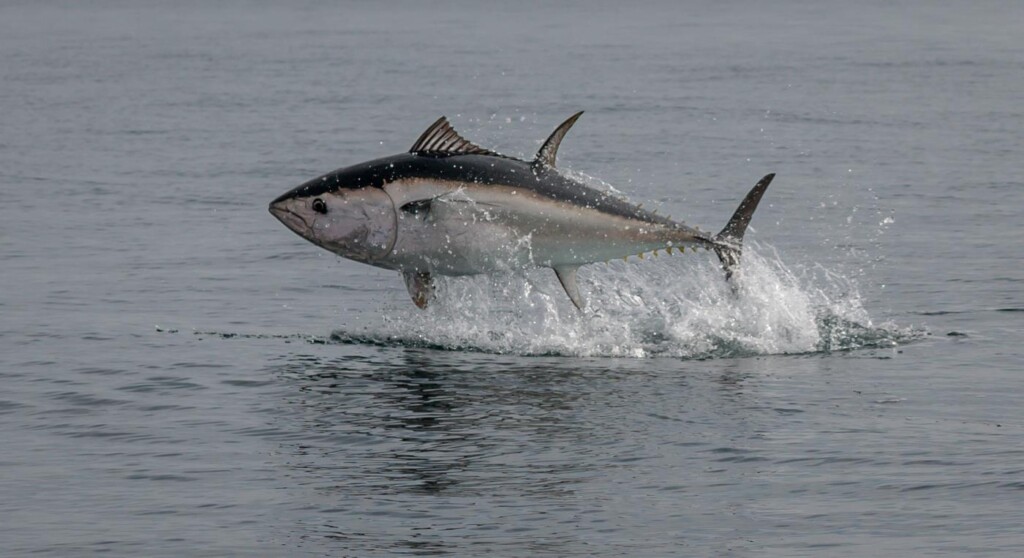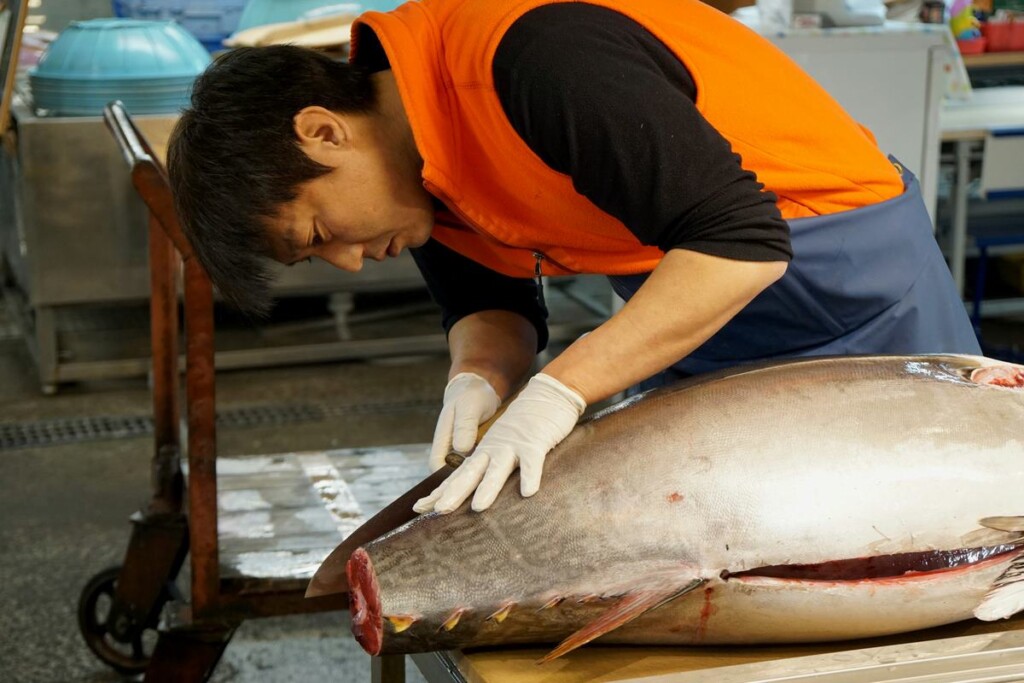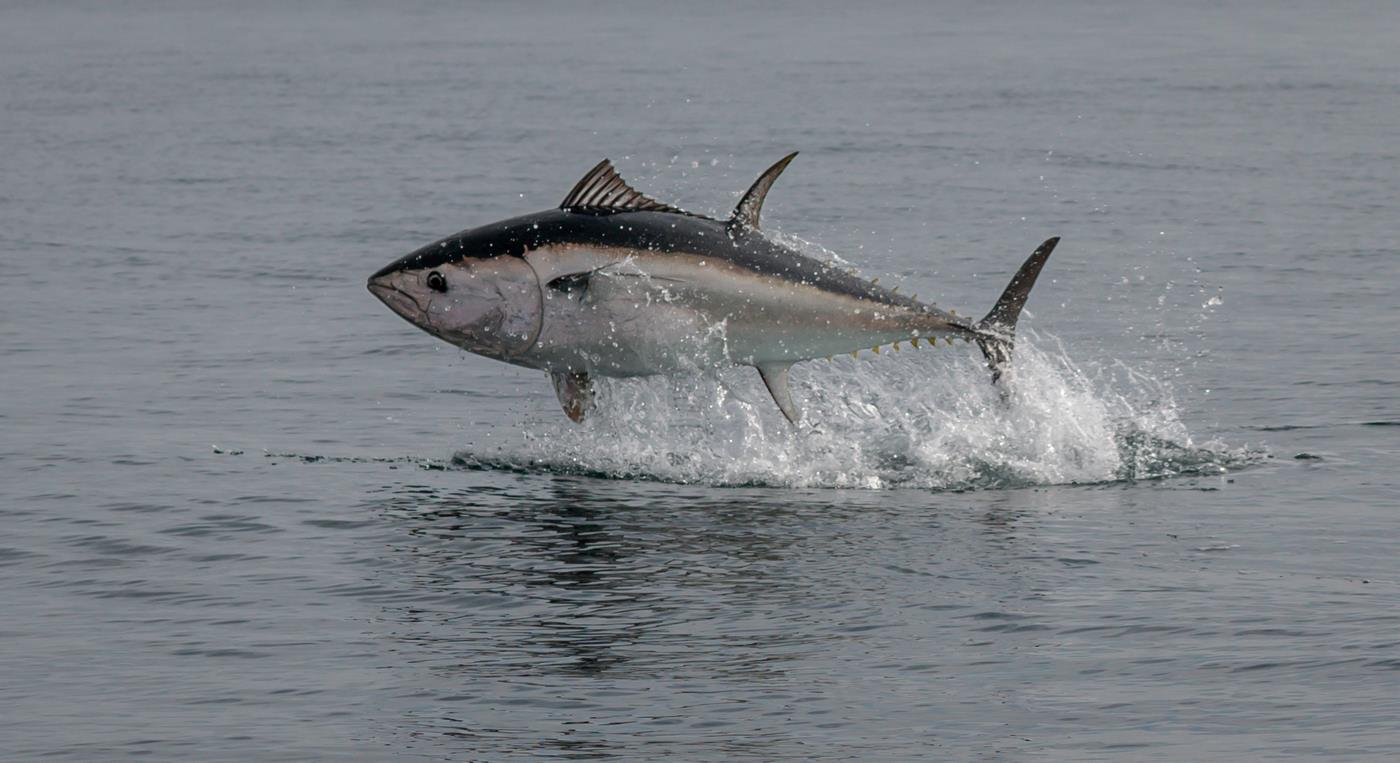
One of the culinary world’s most prized fish, and one of the sea’s fastest most accomplished predators, has left regulators stunned at the power of its recovery.
A target for the pan-Pacific stock of bluefin tuna has already been reached a decade in advance, with one federal fisheries policy analyst suggesting the world isn’t far away from abundant harvests and perpetual population growth at the same time.
Coveted for its richness, combination of fattiness, firmness, and ability to hold a sear, bluefin tuna is the most desired of its genus. When caught by fishermen and brought to harbor in Japan, mature bluefins are auctioned right there on the wharf, with prices ranging from $40 a pound to $4,900 a pound.
In fact, the “Ferrari of Tuna” as it’s sometimes called, has set auction records of $1.8 million for 489-pound adult fish in 2013, and an astounding $3 million for a 612-pound fish in 2019.
One of the fastest fish in the sea, these accomplished predators who spawn in the Pacific between Japan and the Philippines but grow up along the coasts of Mexico and the Western United States, can migrate back to the Indo-Pacific waters—a distance of 6,000 miles—in just 55 days of swimming.
In 2022, a coalition of national fisheries managers and intergovernmental agencies conducted a survey of the population of Pacific bluefin tuna measured by their ‘unfished spawning stock biomass’—the theoretical amount of fish there would be in the absence of fishing.
These included the American National Oceanic and Atmospheric Administration, (NOAA) the Inter-American Tropical Tuna Commission, (IATTC) and the International Scientific Committee for Tuna and Tuna-Like Species in the North Pacific Ocean (ISC).
MORE GOOD FISHY NEWS: The Long-Lost ‘Legend’ Leopard Fish Found Again in Turkey’s Rivers Confirming the Stories from Locals
The NOAA reports that overfishing in the late 1990s and 2000s reduced the estimated bluefin biomass to a historic low of 2% of its potential unfished level in 2009–2012.

At first the goal was to rebuild to at least 20% of the spawning stock biomass by 2034. In 2016, the NOAA Fisheries bureau received a petition to put the bluefin tuna on the Endangered Species List because of this collapse, but opted not to, reasoning that the 1.6 million fish were enough to prevent extinction.
This allowed fishing of the Ferrari of Tuna to continue, and during a recent population assessment, it was found that the 2034 target of spawning stock biomass had already been reached and exceeded. The number of spawning bluefin reached 23.2% of the potential unfished spawning stock.
“There is a point where you can find a balance between abundant harvest while also allowing the stock to grow in perpetuity, and we’ve now exceeded that point,” said Celia Barroso, a Fishery Policy Analyst at the NOAA Fisheries West Coast Region.
Now in July, this coalition is set to meet in Japan to decide tuna catch and recovery targets up to 2025 and beyond, armed with the knowledge that the nearly 500 million people between the US and Japan can continue to enjoy this fish long into the future.
“The recovery of Pacific bluefin tuna shows what we can achieve when scientists, managers, and the fishing industry work together in the international arena in pursuit of a common objective,” said Ryan Wulff, Assistant Regional Administrator for the NOAA Fisheries West Coast Region. “We’ll continue this effort to ensure the sustainable harvest of bluefin for decades to come.”
OCEANS IMPROVING ALL THE TIME: Analysis Shows We’ve Been Overestimating the Amount of Plastic in Oceans by 30x
GNN has reported recently on several other fishing stocks that have seen significant recoveries. The number of overfished stocks in salt and freshwaters in the US has reached all time lows, for starters, led by mackerel and snapper.
The Mediterranean stock of hake—a species that for Spanish cuisine is a must but which is rather absent on American plates—has returned to sustainable levels, with both population and catch limits growing in tandem.
In 2021, GNN reported that 4 other tuna species had had their classifications on the International Union for the Conservation of Nature improved. This included albacore and yellowfin tuna moved from Threatened to Least-Concern, and Atlantic bluefin tuna moved from Endangered to Least Concern.
SHARE This Amazing News About A Species Long Threatened From Overfishing…




















